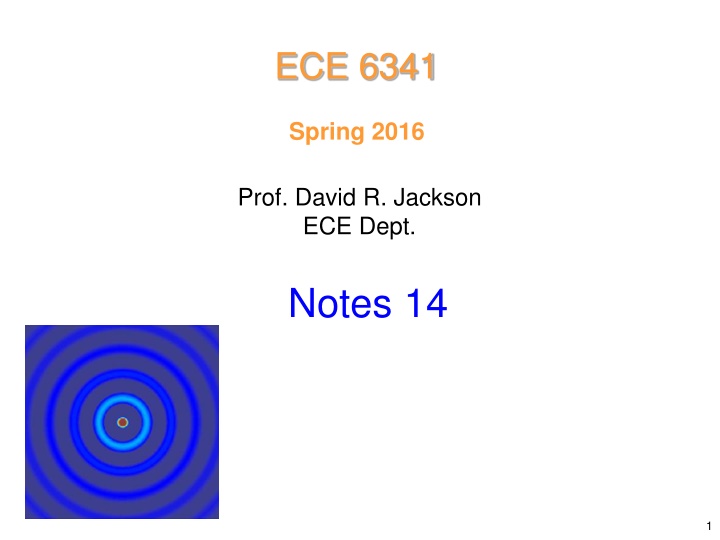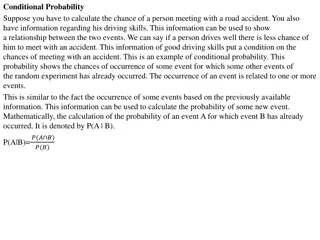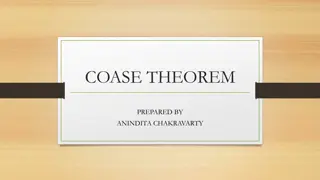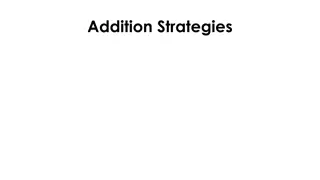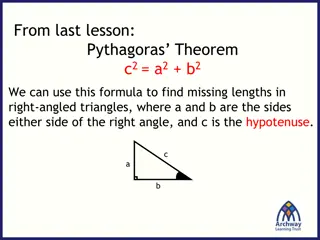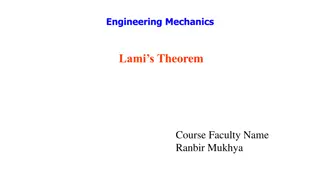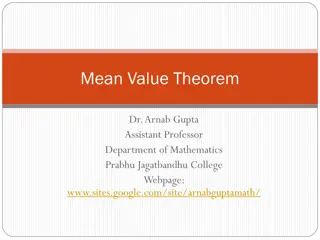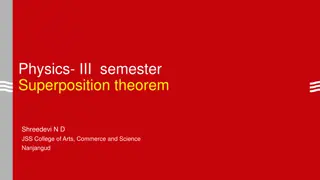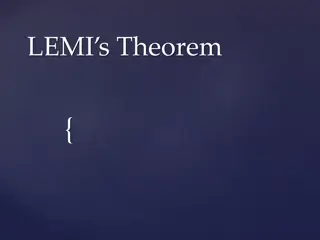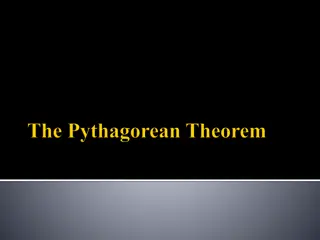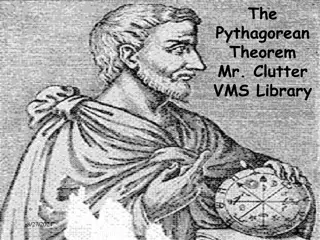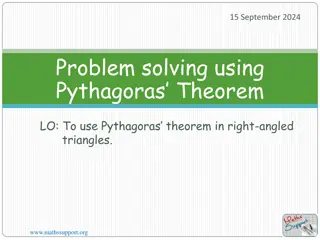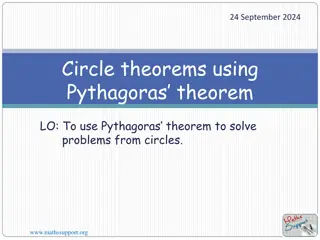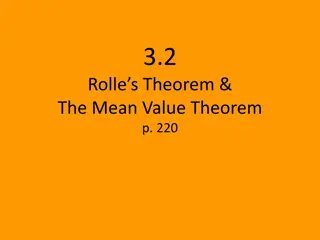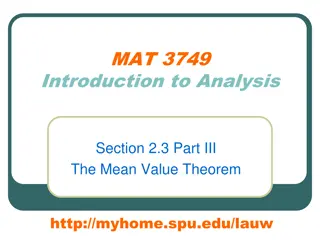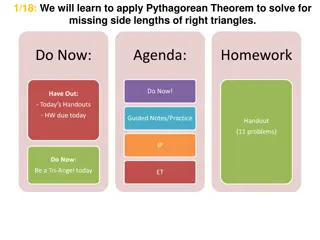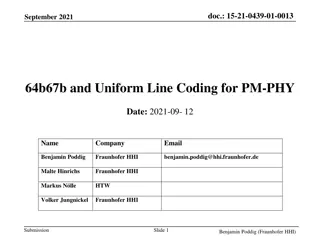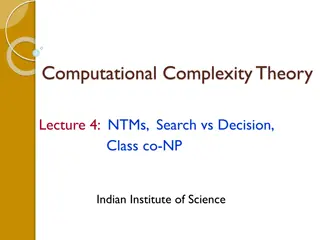Solving Problems with Line Sources: Addition Theorem Insights
The addition theorem allows us to shift the origin when dealing with line sources outside a cylinder, providing a useful tool for solving such problems. Explore the detailed solutions and derivations presented in the notes by Prof. David R. Jackson for ECE 6341 in Spring 2016.
Download Presentation

Please find below an Image/Link to download the presentation.
The content on the website is provided AS IS for your information and personal use only. It may not be sold, licensed, or shared on other websites without obtaining consent from the author.If you encounter any issues during the download, it is possible that the publisher has removed the file from their server.
You are allowed to download the files provided on this website for personal or commercial use, subject to the condition that they are used lawfully. All files are the property of their respective owners.
The content on the website is provided AS IS for your information and personal use only. It may not be sold, licensed, or shared on other websites without obtaining consent from the author.
E N D
Presentation Transcript
ECE 6341 Spring 2016 Prof. David R. Jackson ECE Dept. Notes 14 1
Addition Theorem Allows us to shift the origin for line sources. This is useful for solving problems with a line source outside of a cylinder. y , ) ( 0I x = zA Denote 2
Addition Theorem (cont.) I ( )( 0 ) 2 = 0 H kR = R 4 j ( ) = , x y y ( ) = , x y R x This is the exact solution, but it is not in a useful form. 3
Addition Theorem (cont.) Assume for simplicity 0 = Tube of current model y y 2 2 1 1 ( ,0) 0I ( 0I ,0) x x Surface-current: ( ) = ( ) J A 1 sz 4
Addition Theorem (cont.) + ( ) d = Determine A1: J I 0 sz ( ) = ( ) J A 1 sz = A I so 1 0 I ( ) = ( ) J 0 Hence sz Using the tube of current concept, + = ( ) jn J c e sz n = n 5
Addition Theorem (cont.) 2 1 = ( ) jn c J e d n sz 2 0 2 1 I = jn ( ) 0 e d 2 0 I 1 1 I = 0 = c 0 2 n 2 y The tube of current representation 2 1 x 6
Addition Theorem (cont.) + = jn ( ) a e J k 1 n n = + n = ( ) 2 n jn ( ) b e H k 2 n = n From previous tube of current derivation: ( ) a ( ) = (2) a j c H k n n n 1 I 2 = c 0 n 2 ( ) = b j c J k n n n 2 7
Addition Theorem (cont.) Therefore, we have I ( ) = (2) 0 a j H k n n 4 I ( ) = 0 b j J k n n 4 Hence + I ( ) ( ) = (2) n jn 0 j H k e J k 1 n 4 = + n I ( ) = (2) n jn ( ) 0 j J k e H k 2 n 4 = n 8
Addition Theorem (cont.) For replace 0 + I ( ) ( ) ( ) jn = (2) n 0 j H k e J k 1 n 4 = + n I ( ) ( ) jn = (2) n ( ) 0 j J k e H k 2 n 4 = n y y 0I 2 2 ( ,0) , ) ( 1 1 x x 0I 9
Addition Theorem (cont.) Comparing with the original expression for the potential of the line current, we have + ( ) ( ) (2) n ( ) jn H k J k e n = + n = (2) 0 ( ) H k ( ) ( ) (2) n ( ) jn J k H k e n = n This is the Graf addition theorem. It also holds if k is replaced with k . Johann Heinrich Graf (1852-1918) 10
Addition Theorem (cont.) + ( ) ( ) (2) n ( ) jn H k J k e n = + n = (2) 0 ( ) H k ( ) ( ) (2) n ( ) jn J k H k e n = n y ( , ) 0I x 11
Scattering From a Line Current z a 0I y , ) ( x = zA TMz: 12
Scattering From a Line Current (cont.) + I ( ) ( ) = (2) n ( ) i jn H k J k e 0 n 4 j = n (This is only valid for ) Assume + I ( ) = (2) n ( ) s jn a H k e 0 n 4 j = n a (This is only valid for ) 13
Scattering From a Line Current (cont.) Boundary Conditions ( = a): ( , , ) a = ( , , ) a s i z z Hence = (2) n (2) n ( ) ( ) ( ) a H ka H k J ka n n or ( ) 2 n ( ) H H k ka = ( ) a J ka ( ) 2 n n n ( ) 14
Scattering From a Line Current (cont.) Final result: ( ) 2 n + ( ) ) I H H k ( )( n ) 2 = ( ) s jn ( ) J ka H k e 0 n (2) 4 ( j ka = n n z a 0I Scattered field y , ) ( x 15
